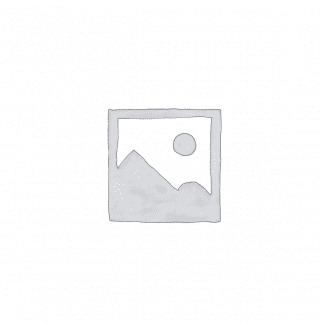ABSTRACT
Antibiotic resistance has become one of the major problems facing humanity. The need for new antimicrobials has been increased dramatically. Plants are considered as a major sources of new antibiotics due to the presence of phytochemicals. In Nigeria and other developing countries medicine plant materials have been used to treat various diseases since ancient times. The goal of our research is to evaluate the phytochemical and antimicrobial efficiency of Ficus sycamorus leaf extracts. The leave of Ficus sycamorus were screened for phytochemicals, antimicrobial activity and minimum inhibition concentration (MIC). The ethanol, methanol, n-hexane, petroleum ether and aqueous extracts of this plants were subjected to phytochemical and antimicrobial analysis as well as minimum inhibitory concentration (MIC) analysis. The result of the phytochemical analysis revealed the presence of tannins, alkaloids, steroid, glycosides and flavonoids. The crude extracts showed various zones of inhibition against the following microorganisms namely; Staphy aerus, Escherichia coli, Pseudomonas aeruginosa, Penicillin chrysogenum and Aspergillus fumigatuss chrysogenum and Aspergillus fumigatuss. The minimum inhibitory concentrations (MIC) for bacteria. and fungi Staphylococcus aerus for ethanol is 125(-), methanol is 250(-) n-hexane is 500(-), aqueous is 500(-) and petroleum ether is 250(-) and also every other and fungi present and this showed that this plant is a very medicinal plant.
TABLE OF CONTENTS
Title………………………………………………………………………………………………i
Certification page.………………………………………………………………………………ii
Dedication………………………………………………………………………………………..iii
Acknowledgements..…………………………………………………………………………….iv
List of tables..……………………………………………………………………………………v
Table of contents ………………………………………………………………………………..vi
Abstract….……………………………………………………………………………………….x
CHAPTER ONE: INTRODUCTION
1.1 Background study..………………………………………………………………………1
1.2. Aims and objective of the study…………………………………………………………2
1.3. Statement of the problem………………………………………………………………..3
1.4. Justification of the study………………………………………………………………..3
CHAPTER TWO: LITERATURE REVIEW
2.1. History of medicinal plants …………………………………………………………….4
2.2. Ficus sycamorus ….……………………………………………………………………..5
2.3. Distribution of Ficus sycamorus………………………………………………………5
2.4 socio-economic significance of Ficus sycamorus ……………………………………..6
2.5 Previous works carried out by different authors ……………………………………..6
CHAPTER THREE: MATERIAL AND METHODS
3.1 Collection of plant material .…………………………………………………………..11
3.2 Apparatus and material used .……………..…………………………………………..11
3.2.1 Reagents………………………………………………………………………………….12
3.2.2 Organisms used …..…………………………………………………………………….13
3.3.1 Identification of plant material ………………………………………………………..14
3.4 Extraction methods ….…………………………………………………………………14
3.5 Analysis ..………………………………………………………………………………14
3.6 Phytochemical analysis …………………………………………………………………14
3.6.1 Qualitative test ………………………………………………………………………….15
3.6.1.1 Test for alkaloids ….………………………………………………………………..15
3.6.1.2 Test for Tannins ……………………………………………………………………….16
3.6.13. Test for Glycosides ……….……………………………………………………………….16
3.6.1.4 Test for flavonoids ….…………………………………………………………………16
3.6.1.5 Test for Steroids ……………………………………………………………………….16
3.7 Micro assay……………………………………………………………………………..17
3.7.1. Microorganism’s collection ……………………………………………………………17
3.7.2. Methodology ………………………………………………………………………….17
3.7.2.1. Preparation of the culture media …..……………………………………………….17
3.7.2.2 Preparation of the standard drugs used …….………………………………………17
3.7.2.3 Preparation of stock solution of the extract…………………………………………18
3.7.3 Sensitivity Test ……………………………………………………………………….18
3.7.3.1 Response of the test organisms ……………………………………………………….18
3.7.3.2. Determination of minimum inhibition concentration (MIC) ………..…………….19
CHAPTER FOUR: RESULT
4.0 Result and analysis…..……………..………………………………………………….20
4.1 Physical appearance of various crude extracts of Ficus sycamores leaf …………….20
4.2. Result for phytochemical analysis ………………………………………………………21
4.3. Morphological characteristics of organisms isolated …………..……………………22
4.4. Antimicrobial analysis results of Ficus sycamorus …..……..……………………….23
4.4.1. Zone of inhibition produced using methanol extracts ………..…………………….23
4.4.2. Zone of inhibition produced using ethanol extracts ..………………………..24
4.4.3. Zone of inhibition produced using n-hexane extracts ……….……………………..25
4.4.4. Zone of inhibition produced using petroleum ether extracts …………….…26
4.4.5. Zone of inhibition produced using distilled water extracts ……………………27
4.5. Minimum inhibitory concentration of all extracts of Ficus sycamorus ………..…28
4.6. Discussion .…………………………………………………………………….………30
CHAPTER FIVE
5.1. Conclusion ……………………………………………………………………………..33
5.2. Recommendation …..…………………………………………………………………..34
Reference
Appendix
CHAPTER ONE
…
DOWNLOAD COMPLETE WORK- For Reference Only: Materials are for research, citation, and idea generation purposes and not for submission as your original final year project work.
- Avoid Plagiarism: Do not copy or submit this content as your own project. Doing so may result in academic consequences.
- Use as a Framework: This complete project research material should guide the development of your own final year project work.
- Academic Access: This platform is designed to reduce the stress of visiting school libraries by providing easy access to research materials.
- Institutional Support: Tertiary institutions encourage the review of previous academic works such as journals and theses.
- Open Education: The site is maintained through paid subscriptions to continue offering open access educational resources.



